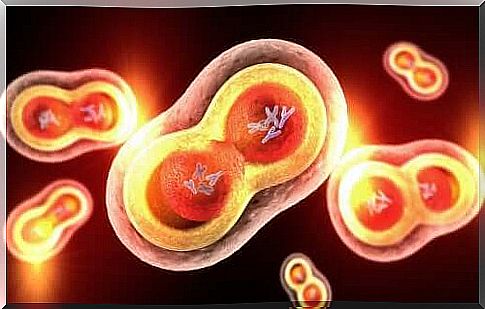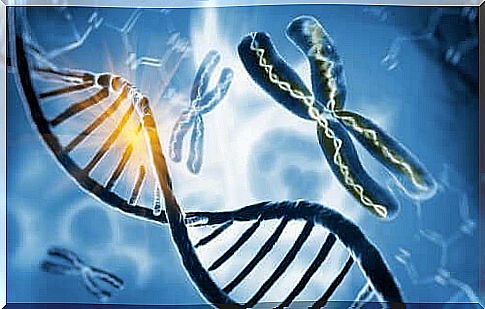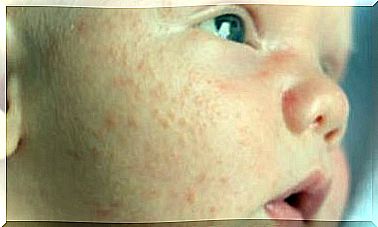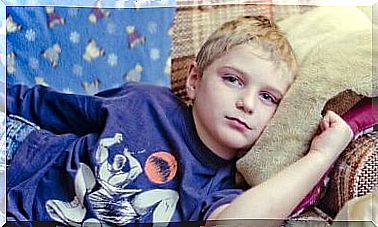How To Explain Mitosis To Children

After fertilization, the newly formed embryonic cell must give rise to all other cells until a complete organism is created. Once formed, it must grow, and during this process your body’s cells mature, multiply and die. But how do cells reproduce? In this article, we’ll look at how to explain the cell reproduction process, mitosis, to children.
What is mitosis?: An explanation for children
Mitosis is the process by which cells multiply. It is one of the 2 stages that make up the cell cycle and occurs after the duplication of genetic material. As a result, two daughter cells equal to the stem cell are obtained.
Mitosis occurs in somatic cells, that is, in any cell in the body that is not a gamete. Gametes are formed by another process called meiosis, which is not cell multiplication but rather the opposite, division.
The cells in our body resort to mitosis when we need to grow or repair a tissue, bone, or organ damage. But how does the process of mitosis take place?
Stages of Mitosis Explained to Children
For cells to reproduce, an earlier phase is needed, the interphase, during which the genetic material is duplicated, and the cell goes from 23 pairs of chromosomes to 46 pairs. Furthermore, some organelles, such as centrioles, are duplicated, while others disappear and, in a matter of hours, are synthesized again.
That way, everything is ready for the cell to go into mitosis. The process takes place in 4 clearly distinct phases: Prophase, Metaphase, Anaphase and Telophase.
Phase 1: the Prophase
- The genetic material in cells begins to condense and chromosomes can be visualized.
- The nuclear membrane destabilizes and disappears.
- Centrioles, one of the most important organelles for this process, are duplicated and begin to travel to the cell poles.
Phase 2: the Metaphase
To better understand this phase, we must imagine the cell as an Earth-like sphere.
- At the poles, we will have the centrioles, from which fibers that resemble the Earth’s lines of latitude will begin to grow. This structure is called the mitotic spindle.
- The chromosomes directed by the fibers of this spindle go towards the equator of the cells, becoming aligned and forming the equatorial plate.
Phase 3: Anaphase
Once the chromosomes are aligned, the centrioles begin to collect the fibers from the mitotic spindle. This causes the chromosomes trapped in the fibers, shaped like an 8-armed spider, to split in two and be dragged towards the poles. Then, each chromosome again has two chromatids, that is, 4 arms.
Phase 4: the Telophase
Once the chromosomes are located at the opposite poles of the cell, they start to decondense. At the same time, the cell again forms the nuclear membrane around it, from the fibers of the centriole asters.
Final step in the process of mitosis explained to children: cytokinesis
At this point, all that remains is to physically divide the stem cell to give rise to the two daughter cells. Paradoxically, the process of cell multiplication is ultimately a division, so that the stem cell disappears when it becomes two daughter cells.
The resulting daughter cells will be genetically the same as the stem cell and will contain the same organelles as the stem cell, although the function they will develop depends on the genes that will be expressed and the degree of maturation of the original cell.

What happens if there are errors during mitosis?
Errors that can occur during the process are few, as the cell has a strict quality system that interrupts the production process if the error is fatal.
This fact does not mean that errors cannot occur, especially in the first divisions of the zygote. If an error cannot be repaired and the cell cycle continues its course, the anomaly can range from imperceptible to cancerous.
One of the most frequent errors is the non-disjunction of chromosomes, when one of the homologous chromosomes does not separate correctly during Anaphase. As a result, we get a daughter cell with three chromosomes, that is, a trisomy, while the other is left with only one, that is, an aneuploidy.
At other times, chromosomes can be damaged, either by breaking one of the arms, causing a deletion , or because a fragment may be incorporated into the chromosome of another pair, causing a translocation . It may also be that the fragment becomes integrated in the opposite direction on the same chromosome, causing an inversion .
And to conclude…
To conclude this article on how to explain mitosis to children, we leave a curiosity.
The process was first described in 1848 by the German botanist Wilhelm Hofmeister, who was studying the embryonic development of higher plants. However, the discovery is attributed to Walther Flemming, as he was the first to see chromosomes dividing.









